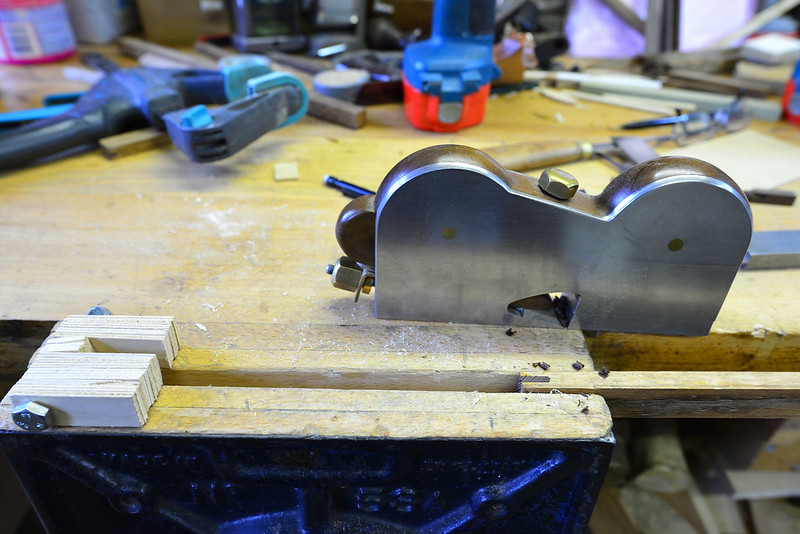Dangermouse 2nd":k98qy94o said:
if you want a wide shoulder plane, but worried about the size and how heavy it is , this is a reaonably prices alterative and extremly well made.
http://www.rutlands.co.uk/sp+woodworkin ... nds+dk1335
Hmmm, while I'm sure the rebate block plane would do at a pinch, I'm not sure it really substitutes for a shoulder plane. As Derek Cohen has pointed out elsewhere, one of the features of shoulder planes is the long toe, which allows firm & accurate registration of the tool before starting the cut. It would also be a bit awkward to hold, most shoulder planes are comparatively tall, and there's usually enough sticking out above the tenon to hang on to & avoid trimming one's fingers in the process.
Many moons ago, I made myself a brass & Rosewood, 1 1/4" infill SP, and was more than happy with it - the heft is an advantage in most situations, and it only occasionally seemed cumbersome. But being an inveterate tool maker, I'd always planned to make a smaller sibling, and finally made this 3/4" job, not so long ago. The shape is based on an illustration of an old Millers (of London) example:
The other day I used it to trim a rather small piece (the edge of the bun on another small infill plane, as it happens) and it was perfect for the job, though I could've done it with the larger plane, or even pared it with a chisel, come to that. If I were only allowed one SP, I think it would be the larger one that I'd keep, but if it had to be the 3/4", that would do for 99% of what I use them for.
But having said all that, a SP is one of the tools I could live without if I had to pare down my toolkit. We were taught the chisel method of trimming tenon shoulders by our old cabinetmaker teacher in school back in the 50s, and it was the method I used for donkeys' years. I still use it quite often, it can sometimes be more convenient than using the SP, and with a knifed line, a very sharp chisel, and a modicum of care, you'd be hard-pressed to spot the difference.....
Cheers,






































